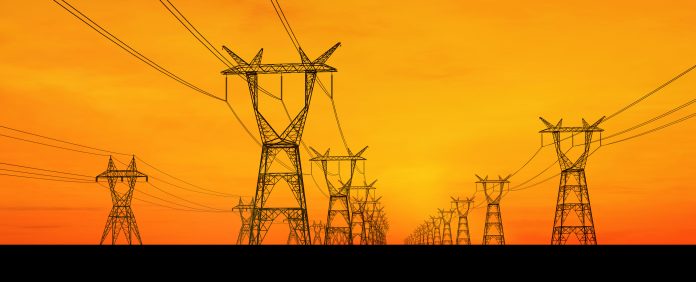Andrej Souvent, CEO of Operato d.o.o. discusses boosting the power grid by using Dynamic Thermal Rating technologies (DTR), drawing on Slovenia as an example
According to the European Green Deal, European Union is targeting a 55% reduction in greenhouse emissions by 2030 and net neutrality by 2050. These targets are very ambitious and thus require significant change also in the European power system. The massive integration of renewable energy sources, while shutting down certain types of conventional sources and establishing the European internal energy market, causes many problems related to power generation volatility, system stability, system inertia, system reserves, transmission congestions, etc. Currently, the rate at which problems occur is greater than the rate of solutions deployment, posing a severe risk to the high quality of power supply we are used to in the EU.
In addition to the aforementioned problems, due to climate change, the power system is facing increasingly frequent severe weather events. Thus, raising the level of the power system resilience is also of great importance. Rapid innovation and innovative solutions deployment are of key importance to solving problems in a timely manner. Action is needed by all stakeholders, in particular transmission system operators. For them, the key question is how to operate the power system flexibly while keeping it secure and stable yet economically efficient. That also implies better utilisation of existing infrastructure.
The Slovenian national transmission system operator Eles has innovatively utilised Dynamic Thermal Rating (DTR) technologies to address part of the challenges mentioned above. DTR is a power system operation concept aiming to maximise utilisation of the equipment, like power lines, transformers, when weather conditions allow it, without compromising the safety of operation. Furthermore, an innovative approach of utilising the DTR technology is also the use of the reverse DTR algorithm for the application for icing prevention.
The most known DTR technology is the Dynamic Line Rating (DLR) which focuses on overhead power lines (OHL). Conductors of an OHL are heated by Joule losses caused by current and by solar heating, but on the other hand, they are also cooled – mostly by radiation and convection. As the temperature of a conductor increases, the sag also increases, and at some point, safety clearance may be violated. As this must be prevented, static ratings are used – these are current limits to prevent the conductor’s temperature from reaching critical value. As these limits are set regarding the worst-case weather conditions, most of the time – e.g., when air temperatures are low, when the wind is blowing, the power lines can be utilised more as the static ratings allow.
Ten years ago, Eles joined forces with research institutions Elektroinstitut Milan Vidmar, Faculty of Electrical Engineering, University of Ljubljana, and Jozef Stefan Institute. A comprehensive modular concept of Dynamic Rating System was developed, mainly focusing on power system operation, operational planning, and improving power system resilience in case of icing.
The system is called SUMO. It’s an indirect Dynamic Rating System comprising of the Dynamic Line Rating, the Dynamic Power Transformer Rating and the Dynamic Line Anti-icing subsystems. The system is software-enabled and meteorological models based on the possibility to also integrate data from meteorological weather stations. DLR calculations are made for all power line spans, and the weakest line-span determines the rating for the whole line. The system supports real-time and short-term forecast operations, calculations of transmission capacities for up to two days ahead, and allows for mitigation of overloading operational situations, also taking into account contingency situations. It also features an inverse DLR algorithm for icing prevention and alarms for extreme weather conditions along the power lines. It is a modular IT system featuring an integration bus with programming APIs and templates for the integration of additional third-party modules.
In February 2014, a large part of Slovenia was subjected to severe icing conditions. The ice loading caused damage to transmission power lines. In total, 52 km of seven different transmission lines were damaged. These lines were designed and constructed in times when the allowed ice loading was substantially lower than may come nowadays. Despite improvements in tower design, Eles also started to investigate alternative ice accretion prevention measures. The main idea was to use the DLR technology in a way that it can be used for calculation of the minimal electric current at which joule losses would heat the conductor enough to prevent ice accretion. In moderate conditions with low wind speeds, it was found that currents that prevent ice accretion are within the operational currents. This was the motivation to develop the Dynamic Line Anti-icing subsystem.
As the SUMO system uses physical models to calculate results and as the main input data is weather assessment and forecasts, the main challenge has been dealing with uncertainties to operate the system with foreseeable risks. The weather assessment and forecast are based on mezzo and microscale meteorological models. Weather model results represent an important source of uncertainties, which can be lowered by local weather measurements at the OHL’s towers. But even more important is that the uncertainties can be evaluated and considered by the SUMO uncertainty module, which calculates the lower and upper limit of the dynamic thermal current related to the chosen confidence interval.
As of December 2013, the system had been trial running. Since 2017 it has been in full operational mode and daily use at the National Control Centre. The dynamic thermal limits are calculated for 29 OHL on 400 kV, 220 kV, and 110 kV voltage levels, two phase-shift, and two power transformers. The system is fully functional and integrated into the daily operation. The main applications that support real-time operation and operation planning are mitigation of overloading operational situations, and calculations of transmission capacities for up to two days ahead. On average, 95% of the time, the system offers a higher transmission capacity with a median increase of 20% of the nominal capacity. Over 500 possible overloading events are mitigated annually.
In 2021, Eles decided to further promote the SUMO Dynamic Rating System and established a daughter company OPERATO, with a mission to share the knowledge and experiences with other power system operators.
Please note: This is a commercial profile
© 2019. This work is licensed under CC-BY-NC-ND.











